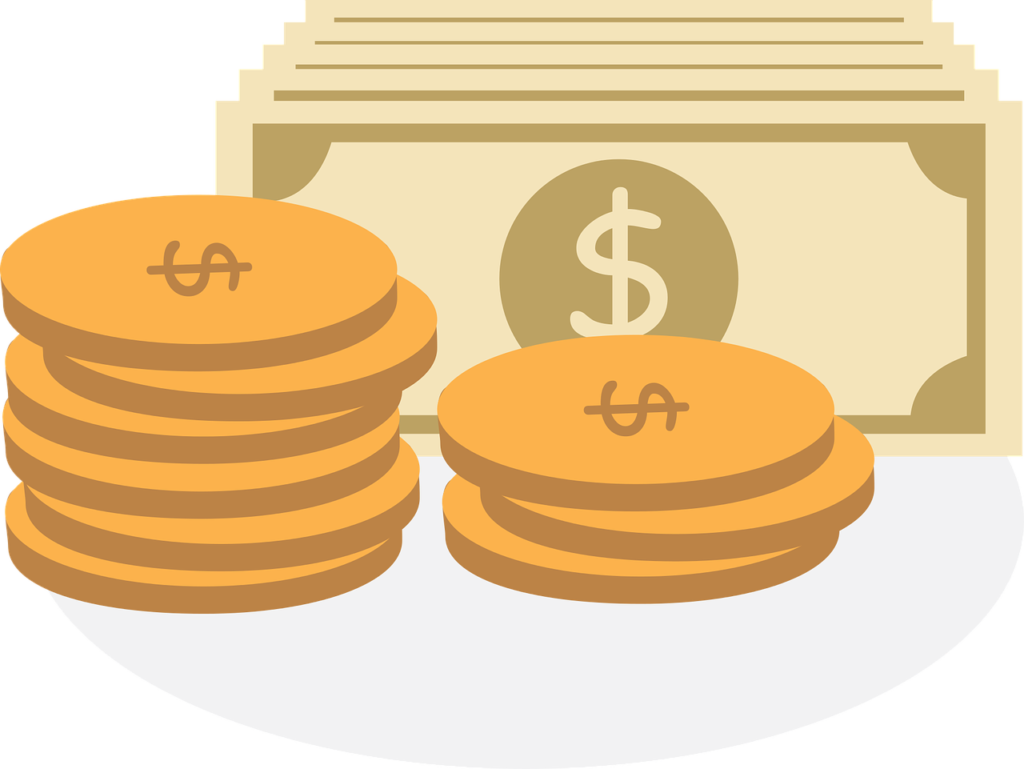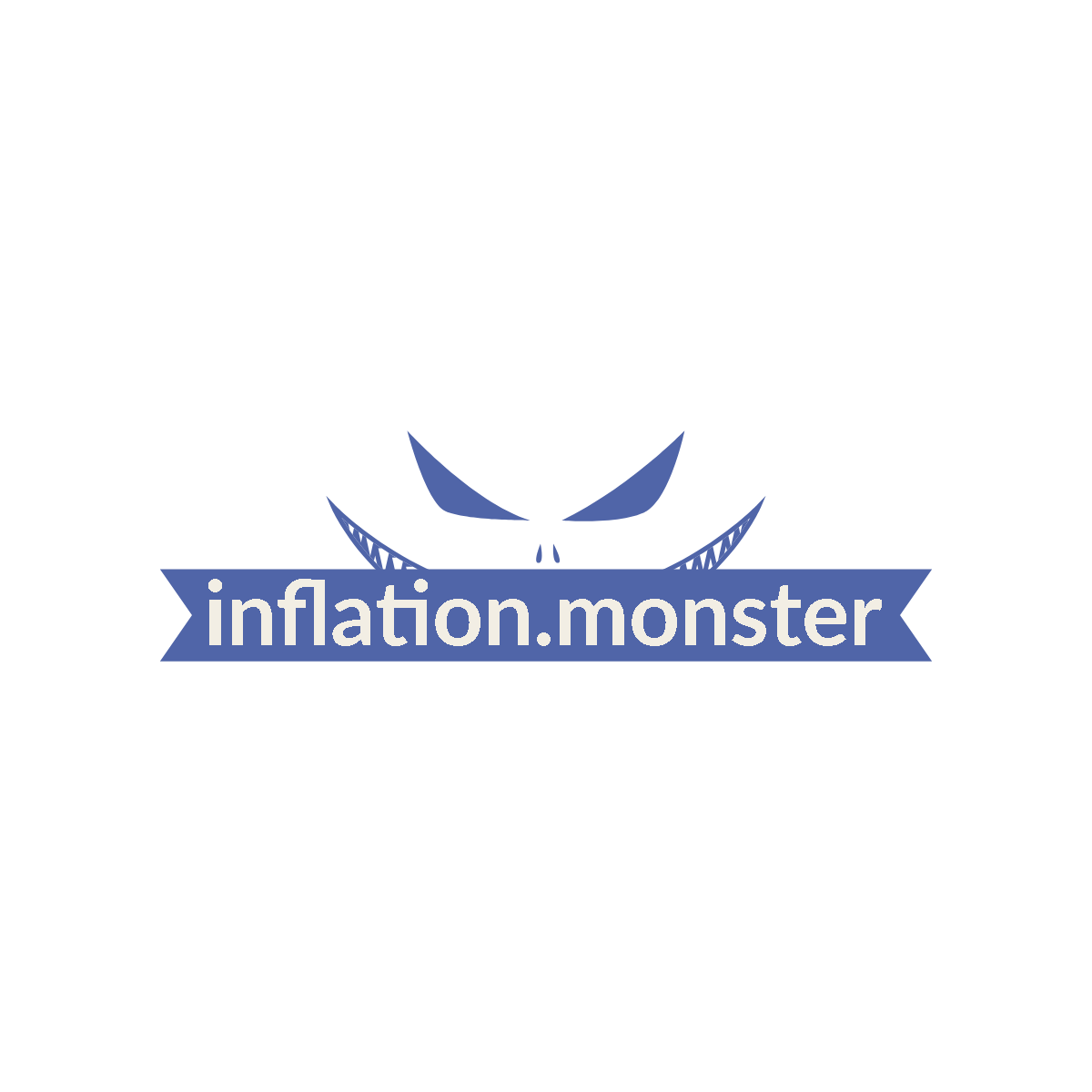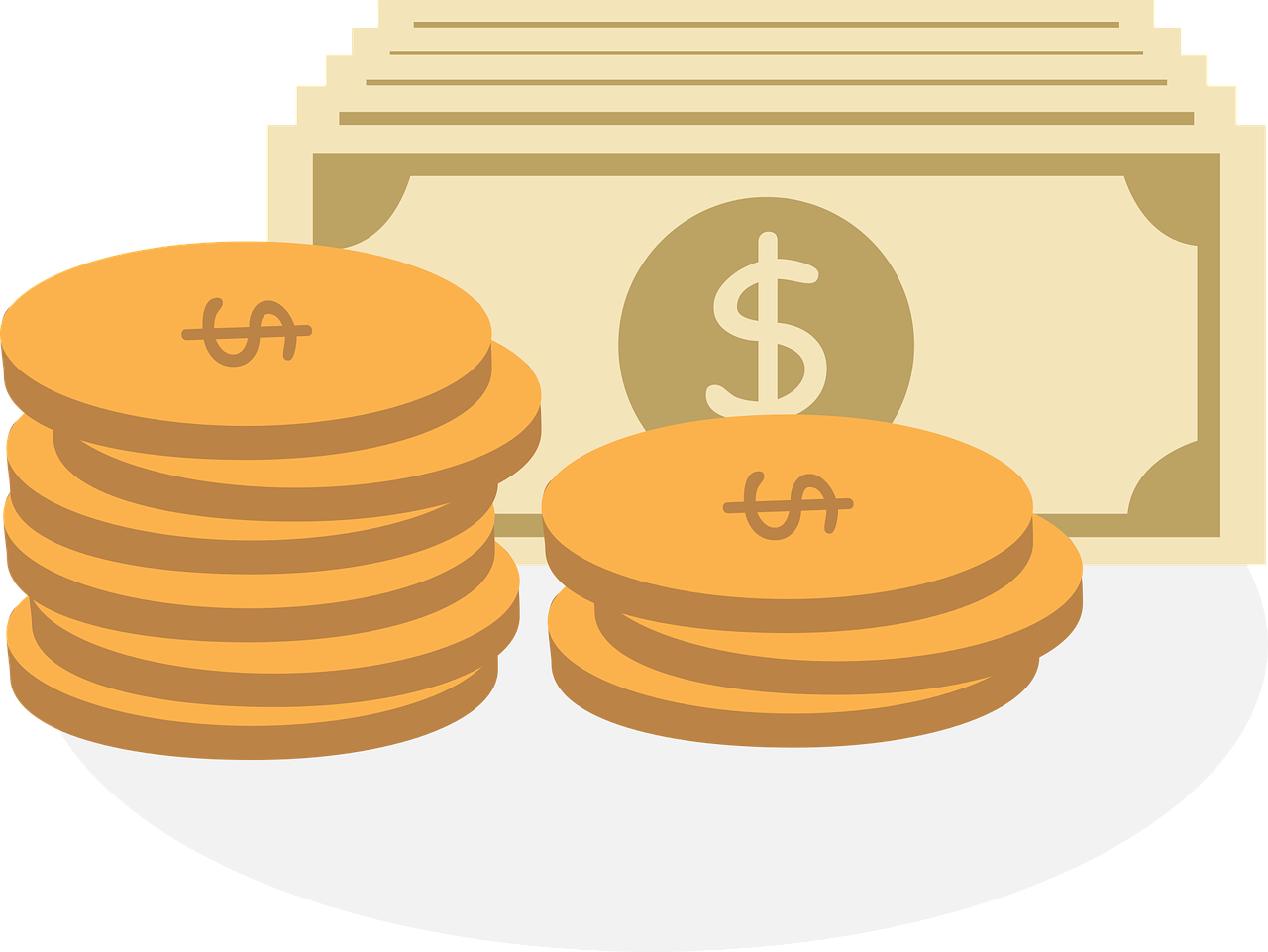Inflation is a powerful force that can quietly erode the value of our hard-earned savings. It’s like a hidden monster that lurks in the shadows, slowly diminishing the purchasing power of our money. But fear not, as Inflation.Monster is here to shed light on this complex phenomenon and its impact on our savings. Join us as we delve into the world of inflation, unravel its mysteries, and equip you with the knowledge to navigate the financial landscape. So, grab a seat and get ready to confront the inflation monster head-on. Your savings depend on it.

Understanding Inflation
What is inflation?
Inflation is the sustained increase in the general price level of goods and services in an economy over a period of time. It is commonly measured by the Consumer Price Index (CPI) or the Producer Price Index (PPI). When inflation occurs, the purchasing power of money decreases, as it takes more money to purchase the same goods and services.
Causes of inflation
There are several factors that can cause inflation. One major cause is the increase in the money supply in an economy. When there is a larger supply of money in circulation, people have more money to spend, causing an increase in demand for goods and services. This increase in demand can lead to higher prices.
Another cause of inflation is cost-push inflation, which occurs when the cost of production increases. This can be due to factors such as rising wages, increased raw material costs, or higher taxes. When production costs increase, businesses may pass these costs onto consumers in the form of higher prices.
Types of inflation
There are different types of inflation, each with its own characteristics. Demand-pull inflation occurs when there is an increase in aggregate demand in an economy. This can happen due to factors such as increased consumer spending or government expenditure. Demand-pull inflation is often associated with periods of economic growth.
Cost-push inflation, as mentioned earlier, occurs when the cost of production increases. This type of inflation is often prompted by factors such as rising energy prices or wage pressures. Cost-push inflation can have a negative impact on both consumers and businesses, as it reduces purchasing power and erodes profit margins.
Another type of inflation is built-in inflation, also known as wage-price spiral. This occurs when workers and businesses expect prices to rise and adjust their wages and prices accordingly. This inflationary cycle can be difficult to break and often leads to an acceleration of inflation.
Inflation’s Effect on Purchasing Power
Definition of purchasing power
Purchasing power refers to the amount of goods and services that can be bought with a given amount of money. When inflation occurs, the value of money decreases, leading to a reduction in purchasing power. This means that the same amount of money can buy fewer goods and services than before.
How inflation erodes purchasing power
Inflation erodes purchasing power by causing prices to rise over time. As the general price level increases, the value of money decreases. For example, if the inflation rate is 2% per year, the purchasing power of $100 would be equivalent to $98 after one year. This means that the same basket of goods that could be purchased for $100 initially would now cost $102.
The erosion of purchasing power can have a significant impact on individuals and households. It means that they need to spend more money to maintain the same standard of living. This can be especially challenging for low-income individuals who may struggle to keep up with rising prices.
Case studies on purchasing power erosion
To illustrate the impact of inflation on purchasing power, let’s consider two case studies.
In the first case study, we have a retiree who has $1,000,000 in savings and a yearly retirement income of $30,000. Assuming an inflation rate of 3% per year, after 20 years, their purchasing power would have decreased by approximately 48%. This means that in order to maintain the same standard of living, the retiree would need a retirement income of around $58,000 per year.
In the second case study, we have a family with a monthly budget of $3,000 for basic expenses such as food, housing, and transportation. Assuming an inflation rate of 2% per year, after 10 years, their monthly expenses would have increased to approximately $3,640. This means that the family would need to find an additional $640 per month to cover the same basic expenses.
These case studies demonstrate how inflation can erode the purchasing power of individuals and households over time, highlighting the importance of understanding and managing inflationary risks.

The Importance of Savings
Definition of savings
Savings refer to the money set aside from one’s income or revenue to be used for future needs or emergencies. It is an essential financial habit that allows individuals and households to build financial security and achieve their long-term goals.
Reasons to save
There are several reasons why saving is important. Firstly, saving provides a financial cushion for unexpected expenses or emergencies. By having savings, individuals can avoid going into debt or relying on credit cards when unexpected bills arise.
Secondly, saving enables individuals to achieve their long-term financial goals, such as buying a house or funding their children’s education. By consistently setting aside money, individuals can accumulate the necessary funds to meet these goals.
Lastly, saving provides financial independence and security. Having savings allows individuals to have more control over their financial future and reduces their dependence on others for financial support.
Benefits of saving
Saving offers numerous benefits to individuals and households. One of the primary benefits is the ability to earn interest and grow one’s wealth over time. By putting money into savings accounts, certificates of deposit (CDs), or other investment vehicles, individuals can earn a return on their savings and increase their net worth.
In addition, saving provides a sense of peace of mind. Knowing that there are funds available for emergencies or unexpected expenses can relieve stress and anxiety. It also gives individuals the freedom to make choices based on their financial goals and priorities.
Furthermore, saving creates a habit of financial discipline and responsibility. By consistently saving a portion of income, individuals learn to prioritize their financial needs and manage their expenses more effectively. This can lead to better financial decision-making and long-term financial well-being.
Inflation’s Impact on Savings
Explanation of inflation’s impact on savings
Inflation has a significant impact on savings. As the general price level increases over time, the value of money decreases, leading to a reduction in the real value of savings. This means that the purchasing power of savings diminishes, and individuals may not be able to buy as much with their savings in the future as they can in the present.
For example, let’s say an individual has $10,000 in savings. If the inflation rate is 3% per year, after one year, the purchasing power of their savings would have decreased to approximately $9,700. This means that the individual would need to earn a return of at least 3% on their savings just to maintain their purchasing power.
Factors exacerbating inflation’s impact
Several factors can exacerbate the impact of inflation on savings. Firstly, the interest rates offered on savings accounts may not keep pace with inflation. If the interest rate earned on savings is lower than the inflation rate, the real value of savings will decrease over time.
Secondly, rising costs of living can put additional pressure on savings. As prices for essential goods and services increase, individuals may need to tap into their savings to cover these expenses, further depleting their savings.
Lastly, the length of time that savings are held can also impact the real value of savings. The longer savings are held without earning a return that outpaces inflation, the greater the erosion of purchasing power.
Historical data on inflation’s impact on savings
Historical data provides insights into the impact of inflation on savings over time. For example, in the United States, the average annual inflation rate from 1913 to 2021 was approximately 3.2%. This means that the dollar’s purchasing power has decreased significantly over the past century.
To put this into perspective, if an individual had $1,000 in savings in 1913, it would be equivalent to approximately $26,700 in 2021. This illustrates the long-term erosion of purchasing power caused by inflation and emphasizes the need to protect savings from its effects.

Strategies to Protect Your Savings from Inflation
Understanding real interest rates
One strategy to protect savings from inflation is to understand and evaluate the real interest rate. The real interest rate is the nominal interest rate minus the inflation rate. It represents the true return on an investment after accounting for inflation.
By seeking out investment vehicles that offer a real interest rate that is higher than the inflation rate, individuals can ensure that their savings are growing in real terms. This means that the purchasing power of their savings is being preserved or even increased over time.
Investing in inflation-protected securities
Another strategy is to invest in inflation-protected securities, such as Treasury Inflation-Protected Securities (TIPS). These securities are specifically designed to provide protection against inflation. The principal value of TIPS is adjusted based on changes in the CPI, ensuring that the investment keeps pace with inflation.
By including TIPS or other inflation-protected securities in their investment portfolio, individuals can safeguard their savings from the erosive effects of inflation. These securities provide a reliable means of preserving the purchasing power of savings over the long term.
Diversifying investment portfolio
Diversifying one’s investment portfolio is another effective strategy to protect savings from inflation. By spreading investments across different asset classes, such as stocks, bonds, real estate, and commodities, individuals can reduce the risk of losing the real value of their savings due to inflation.
Certain asset classes, such as stocks and real estate, historically have shown the ability to outpace inflation and provide significant long-term returns. Incorporating these assets into an investment portfolio can help counter the erosive effects of inflation and preserve the value of savings.
It is important to note that diversification does not guarantee profits or protect against losses. Individuals should carefully consider their risk tolerance, investment objectives, and time horizon before diversifying their investment portfolio.
Inflation’s Effect on Retirement Savings
How inflation affects retirement savings
Retirement savings are particularly vulnerable to the impact of inflation. When individuals save for retirement, they are often looking ahead to a time when they will no longer have a source of regular income. As such, it is essential to consider the impact of inflation on retirement savings and plan accordingly.
If the rate of inflation exceeds the rate of return on retirement savings, the purchasing power of those savings will decline over time. This can have serious consequences for retirees who rely on their savings to cover living expenses and healthcare costs during retirement.
Calculating expected retirement expenses
In order to account for inflation in retirement planning, it is important to accurately estimate future expenses. This involves considering not only current expenses but also the potential increase in costs due to inflation.
One common approach is to track current expenses and adjust them using the inflation rate over the remaining years until retirement. By factoring in the expected rate of inflation, individuals can better estimate their future expenses and determine the amount of savings needed to maintain their desired standard of living.
Importance of inflation-adjusted retirement income
To protect retirement savings from the erosive effects of inflation, it is crucial to consider inflation-adjusted retirement income. This means ensuring that retirement income, such as pensions or annuities, will increase over time to keep pace with inflation.
Choosing retirement income options that offer inflation adjustments, such as cost-of-living adjustments (COLAs), can provide peace of mind and ensure that retirees can maintain their purchasing power throughout their retirement years.
Understanding the Role of Central Banks
Role of central banks in controlling inflation
Central banks play a key role in controlling inflation. One of their primary responsibilities is to maintain price stability by keeping inflation within a target range. They achieve this through various monetary policy tools and strategies.
Central banks actively monitor economic indicators such as inflation rates, employment levels, and GDP growth. When inflation rises above the desired target, central banks may take measures to tighten monetary policy and reduce inflationary pressures. Conversely, when inflation is too low, they may employ expansionary monetary policy to stimulate economic growth.
Tools used by central banks to manage inflation
Central banks have a range of tools at their disposal to manage inflation. One common tool is the adjustment of interest rates. By raising interest rates, central banks can reduce borrowing and spending, which can help to curb inflation. Conversely, lowering interest rates can encourage borrowing and spending, thereby stimulating economic growth.
Another tool used by central banks is open market operations. Through buying or selling government securities on the open market, central banks can influence the money supply and, subsequently, inflation.
Additionally, central banks may also employ macroprudential policies and regulations to manage inflation. These policies aim to ensure the stability of the financial system by controlling excessive risks and preventing asset bubbles that can lead to inflationary pressures.
Effectiveness of central bank policies
The effectiveness of central bank policies in managing inflation can vary depending on the economic context and other factors. In general, central banks have a significant influence on short-term interest rates and can use monetary policy tools to moderate inflationary pressures.
However, there are limitations to the effectiveness of central bank policies. For example, if inflation is driven by external factors such as rising commodity prices or global economic conditions, central bank interventions may have limited impact.
Furthermore, central banks need to carefully balance their actions to avoid negative consequences, such as stifling economic growth or causing financial instability. The effectiveness of central bank policies also depends on the cooperation of other policymakers, including fiscal authorities and regulatory bodies.
Implications of Inflation for Borrowers
Impact of inflation on borrowing costs
Inflation can have both positive and negative implications for borrowers. On one hand, inflation can reduce the real burden of debt over time. As prices rise, the amount borrowed becomes less valuable in real terms. This means that borrowers effectively repay their debts with money that is worth less than when it was borrowed.
On the other hand, inflation can lead to higher borrowing costs. When inflation increases, central banks may raise interest rates to control inflationary pressures. This can result in higher borrowing costs for individuals and businesses, making it more expensive to take out loans or service existing debt.
Tips for managing debt in inflationary environments
To manage debt in inflationary environments, borrowers can consider several strategies. Firstly, it may be advisable to prioritize paying off high-interest debts first. This can help to reduce the overall cost of borrowing and minimize the impact of rising interest rates.
Secondly, borrowers can explore options to refinance existing debts at lower interest rates. Refinancing can be a viable strategy if interest rates have decreased or if a borrower’s creditworthiness has improved over time.
Lastly, budgeting and managing expenses can help to free up additional funds to allocate towards debt repayment. By cutting unnecessary expenses and adhering to a disciplined financial plan, borrowers can reduce their reliance on credit and avoid accumulating excessive debt.
Case studies on debt burden in high inflation periods
To illustrate the impact of inflation on debt burden, let’s consider two case studies.
In the first case study, a homeowner has a fixed-rate mortgage of $200,000 with an annual interest rate of 5%. Assuming an inflation rate of 3% per year, after 10 years, the real burden of the mortgage would have decreased to approximately $157,208 in today’s dollars. This means that inflation has effectively reduced the real value of the debt, making it more manageable for the homeowner.
In the second case study, a borrower has $20,000 in credit card debt with an annual interest rate of 20%. Assuming an inflation rate of 5% per year, after 5 years, the real value of the debt would have increased to approximately $27,103 in today’s dollars. This means that inflation has exacerbated the burden of the debt, making it more difficult for the borrower to repay.
These case studies highlight the contrasting effects of inflation on different types of debt and emphasize the importance of managing debt in inflationary environments.
Inflation’s Impact on Fixed-income Investments
Effect of inflation on fixed-income investments
Inflation has a significant impact on fixed-income investments such as bonds and certificates of deposit (CDs). As inflation increases, the purchasing power of the fixed income generated by these investments decreases. This means that investors may not be able to maintain the same standard of living or achieve their financial goals if they rely solely on fixed-income investments in an inflationary environment.
For example, if an investor holds a bond with a fixed interest rate of 4% and inflation is at 2%, the real return on the investment would be only 2%. This means that the investor’s purchasing power is eroded by 2% per year.
Balancing risk and return in inflationary periods
To balance risk and return in inflationary periods, investors can consider several strategies. Firstly, they can allocate a portion of their investment portfolio to assets that have historically provided a hedge against inflation, such as stocks, real estate, and commodities. These assets have the potential to outpace inflation and provide higher returns.
Secondly, investors can diversify their fixed-income investments by including inflation-protected securities, such as Treasury Inflation-Protected Securities (TIPS). These securities are designed to provide protection against inflation by adjusting the principal value and interest payments based on changes in the CPI.
Lastly, investors can consider investing in fixed-income funds or bond portfolios that actively manage their holdings based on inflation expectations. These funds may invest in a mix of fixed-income securities with varying maturities and interest rate sensitivities to mitigate the impact of inflation on returns.
Options for preserving value in fixed-income investments
There are options available to preserve the value of fixed-income investments in inflationary periods. One option is to invest in short-term fixed-income securities that have maturities of one year or less. Short-term investments generally have lower interest rate sensitivity and are less impacted by changes in inflation expectations.
Another option is to ladder fixed-income investments by spreading out the maturities of the investments. This allows investors to benefit from rising interest rates if they occur, as they can reinvest the proceeds from maturing securities at higher rates.
Lastly, investors can consider working with a financial advisor or portfolio manager who specializes in managing fixed-income investments in inflationary periods. These professionals can provide guidance and tailor investment strategies to individual goals and risk tolerance.
Preparing for Inflationary Pressures
Recognizing signs of inflation
Recognizing signs of inflation can help individuals and households prepare for inflationary pressures. Some common signs of inflation include rising consumer prices, increasing interest rates, and wage pressures.
Monitoring economic indicators such as the Consumer Price Index (CPI), Producer Price Index (PPI), and inflation expectations can provide insights into the potential onset of inflation. By staying informed and aware of changes in prices and market conditions, individuals can take proactive measures to protect their finances.
Taking preemptive measures to mitigate inflation risk
To mitigate the risk of inflation, individuals can take preemptive measures. One important step is to build an emergency fund that can provide a financial buffer in the face of rising prices and unexpected expenses.
Additionally, individuals can consider adjusting their investment strategies to include assets that historically perform well during inflationary periods. These assets may include stocks, real estate, commodities, and inflation-protected securities.
Another preemptive measure is to review and adjust household budgets. By analyzing expenses and identifying areas where costs can be reduced or eliminated, individuals can build a more resilient financial foundation.
Adjusting financial plans to account for inflation
Adjusting financial plans to account for inflation is essential for long-term financial well-being. This involves reassessing goals, savings targets, and investment strategies to incorporate the impact of inflation.
One strategy is to set higher savings targets to compensate for the erosion of purchasing power caused by inflation. By saving a larger amount of money, individuals can offset the impact of rising prices and maintain their desired standard of living.
Furthermore, individuals can revisit their investment portfolios and consider asset allocation strategies that provide exposure to assets that have historically outpaced inflation. Diversifying investments and working with financial advisors can help individuals make informed decisions and ensure that their financial plans remain robust in the face of inflationary pressures.
By recognizing the potential impact of inflation and taking proactive measures, individuals can position themselves to navigate the financial landscape and protect their savings and financial well-being. It involves staying informed, setting realistic goals, and adjusting strategies as needed to adapt to changing economic conditions.




